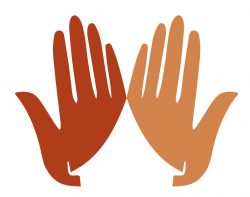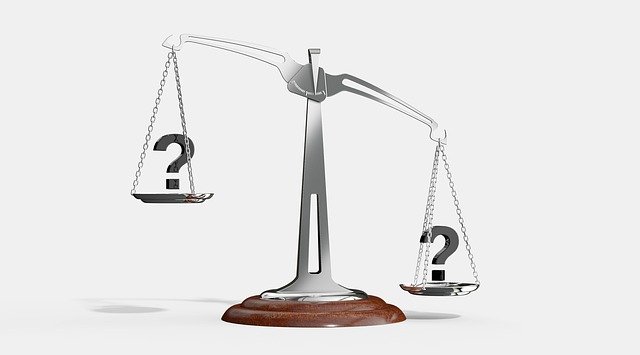Understanding Bias
Although not strictly coming from Buddhist practice, I’d like to take a look at a couple of bias’s we humans have today and how our meditation can help us balance things out.
These are often talked about with mindfulness meditation because it is mindfulness that allows us to see them occurring.
We all have biases in our lives. Just our choice of clothes or car or, in fact, any time we have choices to make, if we step outside of the direct process and take a look what’s going on, we will inevitably discover a level of personal bias. And that’s just fine. Of course we have bias. In meditation, we can work to see if there is any basic bias there that is coming up. Me, personally, because of the way I was taught, I tend to focus on direct experientially approaches to meditation. Any visualisation I find difficult.
But I think it is healthy, every now and then, to work against a bias. To actually see what happens. To experience tension arising as a result. So I will try to experiment with some of the Tibetan approaches to visualisation, for example, to see how it effects me.
When we have a bias, it is like a comfort habit. When I come home, I like to kick my shoes off, maybe pour a glass of wine and relax with a good book. A bias feels a little like this. It is a comfortable space. A couple of years ago, Denise and I decided to run 100 miles in a month. It was October. Rainy, dark evenings and we’d get home and have to run 4 or 5 miles. Way outside of Comfort! Working against our bias feels a little like this. We shouldn’t be uncomfortable in our meditation but we should apply a little effort and sometimes step outside of our comfort zone. The cushion is a safe place to do this. It is very unlikely that we will get cold and wet while meditating, but we can put our minds into similar situations that take us outside of our comfort zones.
It is healthy for us to work in this way as working with bias is very similar to working with craving and desire. We have to notice first and then consider how we pull ourselves back from the bias. Using our meditation subject to not allow ourselves to be drawn in.
We can look at two main bias that we all have and that influence our lives. They pre-disposition towards the negative. To see the negative ahead of the positive.
Negativity Bias
As humans, we tend to:
- Remember traumatic experiences better than positive ones
- Recall insults better than praise
- React more strongly to negative stimuli
- Think about negative things more frequently than positive ones
- Respond more strongly to negative events than to equally positive ones
Relationships
The negativity bias can have a profound effect on your relationships. The bias might lead people to expect the worst in others, particularly in close relationships where people have known each other for a long time.
For example, you might negatively anticipate how your partner will react to something and go into the interaction with your defenses already on high alert. Arguments and resentment are often the results.
When it comes to relationships, it is valuable to remember that negative comments usually carry much more weight than positive ones. Being aware of our own tendency to fixate on the negative is also important. By understanding this natural human tendency, you can focus on finding ways to cut other people a break and to stop expecting the worst.
What happens in meditation?
In meditation this bias also arises. We can find ourselves being critical about our own lack of attention. Not noticing how long we’ve been present. Just noticing how the mind has wondered.
Focus on what is going well in your meditation. Feelings of contentment that arise perhaps. The reason meditation helps to combat negativity bias is because of its focus on what is actually happening rather than what the mind thinks is happening, or what the mind is imagining might happen!
The negativity bias is very powerful in us, but once you start working with it, it is also rather obvious.
There is another bias that hides itself away. Much more subtle, it sits in the background influencing us. It’s success at this is due to the fact that it doesn’t necessarily make us feel bad or cause us to suffer in an obvious way. This is the confirmation bias.
Where do your beliefs and opinions come from? If you’re like most people, you honestly believe that your convictions are rational, logical, and impartial, based on the result of years of experience and objective analysis of the information you have available. In reality, all of us are susceptible to a tricky problem known as a confirmation bias—our beliefs are often based on paying attention to the information that upholds them while at the same time tending to ignore the information that challenges them.
Understanding Confirmation Bias
A confirmation bias is a type of cognitive bias that involves favoring information that confirms your previously existing beliefs or biases.
For example, imagine that a person holds a belief that left-handed people are more creative than right-handed people. Whenever this person encounters a person that is both left-handed and creative, they place greater importance on this “evidence” that supports what they already believe. This individual might even seek “proof” that further backs up this belief while discounting examples that don’t support the idea.
Confirmation biases impact how we gather information, but they also influence how we interpret and recall information. For example, people who support or oppose a particular issue will not only seek information to support it, they will also interpret news stories in a way that upholds their existing ideas. They will also remember details in a way that reinforces these attitudes.
Unfortunately, we all have confirmation bias. Even if you believe you are very open-minded and only observe the facts before coming to conclusions, it’s very likely that some bias will shape your opinion in the end. It’s very difficult to combat this natural tendency.
That said, if we know about confirmation bias and accept the fact that it does exist, we can make an effort to recognize it by working to be curious about opposing views and really listening to what others have to say and why. This can help us better see issues and beliefs from another perspective, though we still need to be very conscious of wading past our confirmation bias.
It is imperative that we get to grips with this one. Actually, my personal view comes from the heart of Buddhist practice. The focus on the alleviation of suffering. The 3 main components of suffering? Craving/desire, aversion and delusion. This bias sits right at the heart of delusion. Essentially, the mind is not seeing the way the world is. It is altering the view to suit its own bias.
So where do we go with meditation? Well, it also arises in meditation. But in a different sense. As sloth and torpor. Our mind actually errs towards things that confirm our bias. In meditation we are essentially taking all sensory input out of the picture. So our mind starts reaching out for things that sit within our bias. A lack of focus on the meditation subject emerges. So we have to redouble our efforts. Working of the hindrance of sloth and torpor will help us to ignore the pull of our bias and stay focussed on the meditation subject.
Little by little we soften the hindrance of sloth and torpor, enjoying the interest in the meditation subject in its own right. Not needing anything else. A contentment to sit with the breath.
Of course, practising meditation also develops a habit of mind watching. So we get used to pulling ourselves back from a situation and watching the biases at work.
01823 428156
The Sangha House,
First Floor, Mitre House,
Tower Street
Taunton
TA1 4BH

